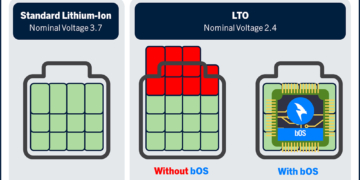-
Table of Contents
- Introduction
- What is Support Vector Machine (SVM) Classification and How Does it Work?
- Troubleshooting Common Issues with SVM Classification
- How to Implement SVM Classification in Python
- The Applications of SVM Classification
- How to Visualize SVM Classification Results
- The Role of Regularization in SVM Classification
- How to Handle Imbalanced Datasets with SVM Classification
- The Impact of Feature Scaling on SVM Classification
- How to Tune Hyperparameters for Optimal SVM Classification Performance
- The Pros and Cons of SVM Classification
- How to Choose the Right Kernel for SVM Classification
- Understanding the Different Types of SVM Classifiers
- The Benefits of SVM Classification for Machine Learning
- Conclusion
“SVM for Classification: Unlocking the Power of Data with Maximum Accuracy and Efficiency.”
Introduction
Support Vector Machines (SVMs) are a powerful and widely used machine learning algorithm for classification. SVMs are supervised learning algorithms that can be used for both classification and regression tasks. They are based on the concept of finding a hyperplane that best divides a dataset into two classes. The algorithm works by mapping data to a high-dimensional feature space so that data points can be categorized, even when the data are not otherwise linearly separable. SVMs are powerful because they can be used to classify data with complex boundaries, and they are also robust to noise and outliers. Additionally, they are memory efficient and can be used for both linear and non-linear classification tasks.
What is Support Vector Machine (SVM) Classification and How Does it Work?
Support Vector Machine (SVM) Classification is a supervised machine learning algorithm used for classification tasks. It is a powerful and versatile tool that can be used for both linear and non-linear classification problems.
SVM works by mapping data to a high-dimensional feature space so that data points can be categorized, even when the data are not otherwise linearly separable. The algorithm creates a hyperplane or set of hyperplanes in a high-dimensional space, which can be used to classify new data points.
The algorithm works by finding the hyperplane that best separates the data points into two classes. This is done by maximizing the margin between the two classes, which is the distance between the two classes and the hyperplane. The data points closest to the hyperplane are called support vectors and are used to define the hyperplane.
Once the hyperplane is determined, new data points can be classified by determining which side of the hyperplane they fall on. If the data point falls on one side of the hyperplane, it is classified as belonging to one class; if it falls on the other side, it is classified as belonging to the other class.
SVM is a powerful and versatile tool that can be used for both linear and non-linear classification problems. It is an effective tool for classifying data points in high-dimensional spaces and can be used to create highly accurate classifiers.
Troubleshooting Common Issues with SVM Classification
Support Vector Machines (SVMs) are a powerful and popular tool for classification tasks. However, as with any machine learning algorithm, there are certain issues that can arise when using SVMs. This article will discuss some of the most common issues and how to troubleshoot them.
1. Poor Performance: Poor performance is one of the most common issues with SVM classification. This can be caused by a variety of factors, such as an inadequate training dataset, an inappropriate kernel, or an incorrect choice of parameters. To troubleshoot this issue, it is important to first check the dataset to ensure that it is of sufficient size and quality. Additionally, it is important to experiment with different kernels and parameters to find the best combination for the task at hand.
2. Overfitting: Overfitting occurs when the model is too complex and is able to fit the training data too well, resulting in poor generalization to unseen data. To address this issue, it is important to use regularization techniques such as cross-validation and parameter tuning. Additionally, it is important to use a simpler model if possible.
3. Unbalanced Classes: Unbalanced classes occur when one class is significantly more represented than the other. This can lead to poor performance as the model may be biased towards the more represented class. To address this issue, it is important to use techniques such as oversampling and undersampling to balance the classes.
4. Outliers: Outliers are data points that are significantly different from the rest of the data. These can have a negative effect on the performance of the model as they can skew the results. To address this issue, it is important to identify and remove any outliers from the dataset.
By understanding and addressing these common issues, it is possible to improve the performance of SVM classification.
How to Implement SVM Classification in Python

Support Vector Machines (SVMs) are a powerful and popular machine learning algorithm used for classification and regression tasks. SVMs are a supervised learning algorithm that can be used to classify data into two or more classes. In this article, we will discuss how to implement an SVM classification in Python.
First, we need to import the necessary libraries. We will be using the Scikit-learn library for this task. Scikit-learn is a popular machine learning library for Python that provides a wide range of algorithms and tools for data analysis and machine learning.
Next, we need to prepare the data for the SVM classification. We need to split the data into training and test sets. We can use the train_test_split() function from the Scikit-learn library to do this.
Once the data is split, we can create the SVM classifier. We can use the SVC() function from the Scikit-learn library to create the SVM classifier. We can specify the kernel type, regularization parameter, and other parameters as needed.
Next, we need to train the SVM classifier. We can use the fit() function from the Scikit-learn library to train the SVM classifier. We need to pass the training data as an argument to the fit() function.
Finally, we can use the predict() function from the Scikit-learn library to make predictions on the test data. We need to pass the test data as an argument to the predict() function. The predict() function will return the predicted labels for the test data.
In this article, we discussed how to implement an SVM classification in Python. We imported the necessary libraries, split the data into training and test sets, created the SVM classifier, trained the SVM classifier, and made predictions on the test data.
The Applications of SVM Classification

Support Vector Machines (SVMs) are a powerful and versatile machine learning algorithm used for classification and regression tasks. SVMs are particularly well-suited for applications where there is a clear margin of separation between classes.
SVMs are used in a wide variety of applications, including text classification, image classification, bioinformatics, and financial forecasting. In text classification, SVMs can be used to classify documents into different categories, such as spam or non-spam emails. In image classification, SVMs can be used to identify objects in an image, such as faces or cars. In bioinformatics, SVMs can be used to classify proteins into different classes based on their sequence. In financial forecasting, SVMs can be used to predict stock prices or other financial indicators.
SVMs are also used in medical diagnosis, where they can be used to classify patients into different categories based on their symptoms. SVMs can also be used in fraud detection, where they can be used to identify suspicious transactions.
Overall, SVMs are a powerful and versatile machine learning algorithm that can be used in a wide variety of applications. They are particularly well-suited for applications where there is a clear margin of separation between classes.
How to Visualize SVM Classification Results
Support Vector Machines (SVMs) are a powerful and popular machine learning algorithm used for classification tasks. Visualizing the results of an SVM classification can help to better understand the performance of the model and identify potential areas of improvement.
One way to visualize the results of an SVM classification is to create a confusion matrix. A confusion matrix is a table that displays the number of true positives, false positives, true negatives, and false negatives for a given model. This can be used to evaluate the accuracy of the model and identify any potential misclassifications.
Another way to visualize the results of an SVM classification is to create a classification report. A classification report displays the precision, recall, and F1-score for each class in the model. This can be used to evaluate the performance of the model on each class and identify any potential areas of improvement.
Finally, it is possible to visualize the results of an SVM classification by creating a decision boundary plot. A decision boundary plot displays the decision boundary of the model, which is the line that separates the classes. This can be used to visualize how the model is separating the classes and identify any potential areas of improvement.
Visualizing the results of an SVM classification can help to better understand the performance of the model and identify potential areas of improvement. By creating a confusion matrix, classification report, and decision boundary plot, it is possible to gain valuable insights into the performance of the model and identify any potential areas of improvement.
The Role of Regularization in SVM Classification
Regularization is an important concept in the field of Support Vector Machine (SVM) classification. It is a technique used to reduce the complexity of a model and prevent overfitting. Regularization helps to ensure that the model generalizes well to unseen data and does not overfit the training data.
Regularization is achieved by adding a penalty term to the objective function of the SVM classifier. This penalty term is a measure of the complexity of the model and is usually a function of the weights of the model. The penalty term is added to the objective function to reduce the complexity of the model and prevent overfitting.
The regularization parameter, also known as the hyperparameter, is used to control the amount of regularization applied to the model. The regularization parameter is usually set by trial and error, and it is important to find the optimal value for the regularization parameter in order to achieve the best performance.
Regularization is an important technique for SVM classification as it helps to reduce the complexity of the model and prevent overfitting. It is important to find the optimal value for the regularization parameter in order to achieve the best performance.
How to Handle Imbalanced Datasets with SVM Classification

Support Vector Machines (SVMs) are a powerful and popular machine learning technique used for classification tasks. However, when dealing with imbalanced datasets, SVMs can suffer from poor performance due to the class imbalance. An imbalanced dataset is one where the classes are not equally represented, and this can lead to bias in the model.
Fortunately, there are several techniques that can be used to improve the performance of SVMs on imbalanced datasets. The first step is to use data pre-processing techniques to balance the dataset. This can be done by either oversampling the minority class or undersampling the majority class. Oversampling involves generating additional data points for the minority class, while undersampling involves removing data points from the majority class.
Another technique is to use cost-sensitive learning. This involves assigning different costs to misclassifying different classes. For example, if the minority class is more important, then a higher cost can be assigned to misclassifying it. This encourages the model to focus more on correctly classifying the minority class.
Finally, it is possible to use a modified version of the SVM algorithm known as the one-class SVM. This algorithm is designed to work with imbalanced datasets by focusing on the minority class. It does this by creating a boundary around the minority class and then classifying any data points outside of this boundary as belonging to the majority class.
By using these techniques, it is possible to improve the performance of SVMs on imbalanced datasets. This can help to ensure that the model is able to accurately classify data points from both classes, regardless of the class imbalance.
The Impact of Feature Scaling on SVM Classification
Feature scaling is an important preprocessing step in the application of Support Vector Machines (SVMs) for classification. It is a technique used to normalize the range of independent variables or features of data. In other words, it is the method of rescaling the range of features such that they have the properties of a standard normal distribution with a mean of zero and a standard deviation of one.
The impact of feature scaling on SVM classification can be significant. Without feature scaling, the SVM algorithm may not be able to properly identify the optimal hyperplane that separates the classes. This is because the algorithm is sensitive to the relative magnitudes of the features. If the features are not scaled, the algorithm may be biased towards the features with larger magnitudes, resulting in an inaccurate classification.
In addition, feature scaling can also improve the training time of the SVM algorithm. Without feature scaling, the algorithm may take a longer time to converge to the optimal hyperplane. This is because the algorithm needs to adjust the weights of the features to identify the optimal hyperplane. If the features are not scaled, the algorithm may take a longer time to adjust the weights of the features with larger magnitudes.
In conclusion, feature scaling is an important preprocessing step for SVM classification. It can help the algorithm identify the optimal hyperplane that separates the classes and improve the training time of the algorithm. Therefore, it is important to scale the features before applying the SVM algorithm for classification.
How to Tune Hyperparameters for Optimal SVM Classification Performance
Support Vector Machines (SVMs) are powerful supervised learning algorithms used for classification and regression tasks. To achieve optimal performance, it is important to tune the hyperparameters of the SVM model. Hyperparameters are the parameters that are set before the learning process begins and are not adjusted during the training process.
The most important hyperparameters to tune for an SVM model are the kernel type, the regularization parameter, and the kernel parameters. The kernel type determines the type of decision boundary that the SVM will use to separate the data points. Common kernel types include linear, polynomial, radial basis function (RBF), and sigmoid. The regularization parameter is used to control the complexity of the model and prevent overfitting. The kernel parameters are used to control the shape of the decision boundary and can be adjusted to improve the model’s performance.
To tune the hyperparameters for optimal SVM performance, it is important to use a systematic approach. One approach is to use a grid search to find the optimal combination of hyperparameters. In a grid search, a range of values for each hyperparameter is specified and the model is trained and evaluated for each combination of values. The combination of hyperparameters that yields the best performance is then selected.
Another approach is to use a randomized search. In a randomized search, a range of values for each hyperparameter is specified and a random set of combinations is evaluated. The combination of hyperparameters that yields the best performance is then selected.
Finally, it is important to use cross-validation when tuning the hyperparameters of an SVM model. Cross-validation is a technique used to evaluate the performance of a model on unseen data. It is important to use cross-validation to ensure that the model is not overfitting the training data.
By using a systematic approach to tune the hyperparameters of an SVM model, it is possible to achieve optimal performance. It is important to use a grid search, a randomized search, and cross-validation to ensure that the model is not overfitting the training data and is able to generalize to unseen data.
The Pros and Cons of SVM Classification
Support Vector Machines (SVMs) are a powerful and popular type of supervised machine learning algorithm used for classification and regression tasks. SVMs are a type of linear classifier that uses a hyperplane to separate data points into two or more classes. They are widely used in a variety of applications, such as text classification, image recognition, and bioinformatics.
Pros of SVM Classification
1. High Accuracy: SVMs are known for their high accuracy in classification tasks. They are able to accurately classify data points even when the data is not linearly separable.
2. Robustness: SVMs are robust to outliers and can handle high-dimensional data.
3. Versatility: SVMs can be used for both classification and regression tasks.
4. Efficiency: SVMs are computationally efficient and can be used for large datasets.
Cons of SVM Classification
1. Complexity: SVMs can be difficult to understand and implement due to their complexity.
2. Overfitting: SVMs can be prone to overfitting if the data is not properly preprocessed.
3. Time-consuming: Training an SVM can be time-consuming, especially for large datasets.
4. Limited Kernel Options: SVMs are limited to a few kernel options, such as linear, polynomial, and radial basis function (RBF).
How to Choose the Right Kernel for SVM Classification
Support Vector Machines (SVMs) are powerful supervised learning algorithms used for classification and regression tasks. When using SVMs for classification, it is important to choose the right kernel for the task. The kernel is a function that maps the data into a higher dimensional space, allowing the SVM to separate the data into classes.
The choice of kernel depends on the type of data and the desired outcome. For example, linear kernels are suitable for linearly separable data, while non-linear kernels such as the radial basis function (RBF) kernel are suitable for non-linear data. The polynomial kernel is suitable for data that is not linearly separable, but can be separated by a polynomial boundary.
When choosing a kernel, it is important to consider the complexity of the data. If the data is complex, a non-linear kernel such as the RBF kernel may be more suitable. On the other hand, if the data is simple, a linear kernel may be more appropriate.
It is also important to consider the number of features in the data. If the data has a large number of features, a non-linear kernel may be more suitable. On the other hand, if the data has a small number of features, a linear kernel may be more appropriate.
Finally, it is important to consider the computational cost of the kernel. Non-linear kernels such as the RBF kernel are computationally expensive, while linear kernels are computationally efficient. Therefore, if computational cost is a concern, a linear kernel may be more suitable.
In summary, when choosing a kernel for SVM classification, it is important to consider the type of data, the complexity of the data, the number of features, and the computational cost. By taking these factors into account, it is possible to choose the right kernel for the task.
Understanding the Different Types of SVM Classifiers
Support Vector Machines (SVMs) are a powerful and versatile type of supervised machine learning algorithm used for classification and regression tasks. SVMs are particularly well-suited for problems where there is a clear margin of separation between classes.
There are three main types of SVM classifiers: linear, polynomial, and radial basis function (RBF) classifiers. Each type of SVM classifier has its own advantages and disadvantages, and the choice of which type to use depends on the data and the problem at hand.
Linear SVM classifiers are the simplest type of SVM classifier. They are used when the data is linearly separable, meaning that a straight line can be drawn to separate the two classes. Linear SVMs are fast and efficient, but they are limited in their ability to capture complex relationships in the data.
Polynomial SVM classifiers are more powerful than linear SVMs, as they can capture more complex relationships in the data. They are used when the data is not linearly separable, and a polynomial function is used to separate the two classes. Polynomial SVMs are more computationally expensive than linear SVMs, but they can provide better results in certain cases.
Radial basis function (RBF) SVM classifiers are the most powerful type of SVM classifier. They are used when the data is not linearly separable, and an RBF kernel is used to separate the two classes. RBF SVMs are more computationally expensive than linear and polynomial SVMs, but they can provide better results in certain cases.
In summary, there are three main types of SVM classifiers: linear, polynomial, and radial basis function (RBF) classifiers. Each type of SVM classifier has its own advantages and disadvantages, and the choice of which type to use depends on the data and the problem at hand.
The Benefits of SVM Classification for Machine Learning
Support Vector Machines (SVMs) are a powerful and popular tool for machine learning classification tasks. SVMs are a supervised learning algorithm that can be used to classify data into two or more categories. They are particularly useful for tasks such as image recognition, text classification, and facial recognition.
SVMs are advantageous for machine learning classification tasks because they are able to accurately classify data with a high degree of accuracy. This is due to the fact that SVMs are able to create a hyperplane that separates the data into two or more categories. This hyperplane is created by finding the optimal line that maximizes the distance between the two categories. This allows the SVM to accurately classify data even when the data is not linearly separable.
Another advantage of SVMs is that they are able to handle high-dimensional data. This is because SVMs are able to create a hyperplane that is able to separate the data even when the data is not linearly separable. This allows SVMs to be used for tasks such as facial recognition, which requires a large amount of data points.
Finally, SVMs are able to handle data with a large amount of noise. This is because SVMs are able to create a hyperplane that is able to separate the data even when the data is not linearly separable. This allows SVMs to be used for tasks such as text classification, which often contains a large amount of noise.
In conclusion, SVMs are a powerful and popular tool for machine learning classification tasks. They are able to accurately classify data with a high degree of accuracy, handle high-dimensional data, and handle data with a large amount of noise. For these reasons, SVMs are a great choice for machine learning classification tasks.
Conclusion
Support Vector Machines (SVMs) are powerful classification algorithms that are used in a variety of applications. They are based on the concept of finding a hyperplane that best divides a dataset into two classes, and then using that hyperplane to classify new data points. SVMs are powerful because they can handle both linear and non-linear data, and they are also robust to outliers. Additionally, they are able to handle high-dimensional data, and they are relatively easy to implement. SVMs are a great choice for classification tasks, and they can be used in a variety of applications.














